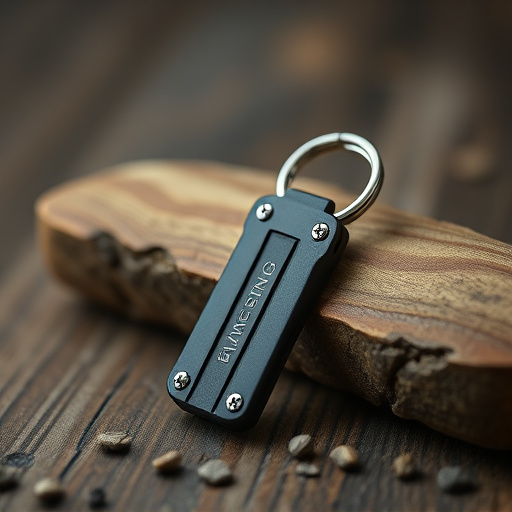In the market for compact keychain defense tools, understanding regional Keychain Weapon Permit Requirements is essential for legality and safety. These tiny devices must be portable, durable, and possess powerful deterrence features like sharp blades or stun functions while adhering to size, weight, and functionality restrictions. Design considerations prioritize ease of deployment under stress, ergonomics, and safety mechanisms to avoid accidental activation, with compliance to local Keychain Weapon Permit Requirements crucial for legal carrying permissions.
In today’s world, personal safety is paramount, leading many to seek versatile self-defense tools that fit comfortably in their pockets. The compact keychain defense tool has emerged as a popular choice, combining convenience and protection. This article explores the essential design considerations for such tools, including legal aspects like the Keychain Weapon Permit Requirements and crucial features for effectiveness. We’ll delve into the balance of safety, efficacy, and ergonomics to help developers create powerful, yet user-friendly self-defense solutions.
- Understanding Compact Keychain Defense Tool Design Requirements
- Keychain Weapon Permit: Legal Considerations and Compliance
- Essential Features and Functions for Effective Self-Defense
- Safety, Efficacy, and Ergonomics in Compact Keychain Tool Development
Understanding Compact Keychain Defense Tool Design Requirements
In the realm of compact keychain defense tools, understanding the design requirements is paramount. These tiny yet powerful devices are meant to be easily portable, fitting comfortably on a keychain or in a pocket, while still packing a punch for self-defense. The keychain weapon permit requirements vary by region, but they generally include factors like size (often no larger than 6 inches), weight (lightweight for ease of carry), and functionality (capable of causing reasonable force to disable an assailant).
Designers must also consider materials, ensuring durability and reliability in various weather conditions. Ergonomics play a crucial role, as the tool should be easy to grasp and deploy under stress. Moreover, safety features such as automatic lock mechanisms and impact-resistant casings are essential to prevent accidental activation. These compact tools aim to empower individuals with an accessible means of self-defense while adhering to legal keychain weapon permit requirements.
Keychain Weapon Permit: Legal Considerations and Compliance
The legality of carrying a keychain defense tool equipped with a blade or other sharp edge varies significantly across different jurisdictions, often categorized under the broader umbrella of keychain weapon permit requirements. It’s crucial for any individual considering such a purchase to understand the legal ramifications and comply with local laws. Each region has its own set of rules governing the possession and carriage of defensive tools, which can be influenced by factors like public safety concerns, crime rates, and cultural attitudes towards self-defense.
Obtaining a permit or license for a keychain defense tool is typically a necessary step in many areas. These permits often come with specific conditions, such as age restrictions, training requirements, and registration obligations. Understanding these keychain weapon permit requirements is essential to avoid legal repercussions and ensure that the carrying of such a device remains lawful and responsible.
Essential Features and Functions for Effective Self-Defense
When designing a compact keychain defense tool, several essential features and functions must be considered to ensure its effectiveness in self-defense scenarios. Firstly, the tool should incorporate a reliable and easy-to-activate mechanism for swift deployment. This could include features like a quick-release lever or a simple twist-and-pull action, allowing users to access the defense tool quickly when needed. The design should also prioritize safety, ensuring that it cannot be inadvertently activated and causing harm to the user. A key consideration is the balance between compactness and functionality; the tool must remain small enough to attach to a keychain or easily carried in a pocket while still offering robust defensive capabilities.
Moreover, the effectiveness of such a device often hinges on its ability to disable or deter an attacker. Incorporating features like sharp blades, spikes, or even tactical stun functions can significantly enhance its deterrence factor. Additionally, the material used should be durable and resilient, capable of withstanding regular use and potential impact against harder surfaces. It’s also crucial to ensure compliance with any local laws and regulations regarding keychain weapons, understanding the specific permit requirements for such devices. This ensures that individuals carrying these tools remain within legal boundaries while still benefiting from an extra layer of personal security.
Safety, Efficacy, and Ergonomics in Compact Keychain Tool Development
When designing a compact keychain defense tool, safety is paramount. These tools are intended for self-defense, so they must be engineered to minimize risk to the user and bystanders. This includes features like automatic lock mechanisms that prevent accidental deployment and designed-in safety catches to control the force of the strike. Understanding local laws and requirements, such as those related to Keychain Weapon Permit Requirements, is crucial to ensure the tool complies with legal standards for self-defense devices.
Efficacy goes hand in hand with safety. A compact keychain tool should be effective enough to deter potential threats and provide a level of protection. The design should incorporate features that enable swift and precise deployment, ensuring users can react quickly in dangerous situations. Ergonomics play a significant role in determining the tool’s overall usability. A comfortable grip and intuitive handling allow for efficient use even when the user is under stress, making it a reliable companion for personal safety.
In the development of compact keychain defense tools, balancing functionality, safety, and legal compliance is paramount. Understanding the specific requirements, such as those for a Keychain Weapon Permit, ensures these devices serve their intended purpose while adhering to relevant regulations. By prioritizing essential features like durability, ease of use, and reliable self-defense mechanisms, designers can create effective tools that enhance personal safety without compromising ergonomics. With careful consideration of legal and practical factors, compact keychain defense tools offer a convenient and discreet solution for individuals seeking additional protection.
